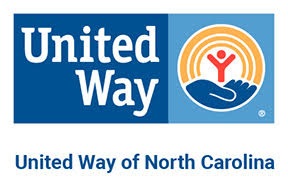 Special to the Philanthropy Journal
Special to the Philanthropy Journal
By Maureen McKeon
Despite having incomes well above the Federal Poverty Level, many working families still struggle to bring home enough to meet their basic needs. A single mother with a preschool age child and a school age child in rural Franklin County, NC needs to earn $48,494 annually to meet her family’s most basic needs according to The Self-Sufficiency Standard for North Carolina 2017. If she has a minimum wage job, she must work 127 hours a week to earn that much. A family of two adults with the same children in the same community needs to make $55,391 annually to meet their needs.
While these families live in North Carolina, they are not unique. Self-Sufficiency Standard data for 38 other states, the District of Columbia and New York City show similar situations. Many families earning more than the Federal Poverty Level don’t earn enough to make ends meet on a daily basis. The Self-Sufficiency Standard is a tool that can be used to educate communities about this reality and help put working families on the road to financial stability.
 What is the Self-Sufficiency Standard?
What is the Self-Sufficiency Standard?
To determine the true cost of meeting basic needs all major budget items faced by a working family must be considered. Where a family lives and the ages and number of people in the family must be considered, as well. The Self-Sufficiency Standard determines the minimum income required for all basic needs in different communities and for different family compositions. The Federal Poverty Measure, on the other hand, only considers the cost of food in its calculation.
The Self-Sufficiency Standard is calculated using multiple nationally recognized data resources, such as the U.S. Census Bureau, USDA, and HUD. It considers housing, child care, food, transportation, health care, household and clothing expenses and taxes and tax credits. It also includes a separate emergency savings calculation to cover basic needs in case of an unforeseen job loss. It’s important to note that this minimum income is a “bare bones” amount, allotting just enough to cover basic needs and nothing else. The food budget, for example, only includes groceries with nothing allotted for takeout, even a pizza or ice cream.
The Self-Sufficiency Standard Report for North Carolina 2017 identifies these costs for more than 700 family types in each of North Carolina’s 100 counties. Data is presented by family type – the number of adults and children in a family and the age of each child. The calculated Self-Sufficiency Wage for each family type is available as hourly, monthly, and annual amounts. Monthly expenses, tax credits and emergency savings fund contribution amounts are also provided.
How can the Self-Sufficiency Standard be used?
United Way of North Carolina supported the development of the Self-Sufficiency Standard for North Carolina to ensure the best data is available to inform community efforts to help families make progress towards real financial stability. United Ways focus on addressing the gap between family earnings and self-sufficiency, and the Standard is a tool that can be used as a benchmark for organizations like United Way to measure impact of its work in local communities. It can help United Ways and their partners answer questions like: What supports do families need to move from dependence on public and private assistance to financial stability? Child care assistance, food benefits, housing and healthcare are all important areas of focus for United Ways and their local partners.
The Self-Sufficiency Standard data can be used to help families close the gap between their current wages and what they need to be truly self-sufficient. Closing that gap will require both reducing costs and raising incomes. Reducing costs means ensuring families that are struggling to cover basic expenses have access to work supports, such as child care assistance and food benefits, that offer stability while they become self-sufficient. Raising incomes means enhancing skills as well as improving access to jobs that pay self-sufficient wages and have career potential.
For families that have achieved self-sufficiency, The Economic Security Pathways Report, a companion to the Self-Sufficiency Standard, offers options for long-term economic security. The Report discusses education opportunities; offers cost analysis of improved housing and homeownership; and builds a case for saving for retirement. Exploring the cost of different pathways to improve economic security helps families chart realistic paths for maintaining financial stability.
The reports can be used in a variety of ways, including, but not limited to:
- as a counseling tool for clients in workforce and training programs and high school and community college students, among others, to support career planning;
- as an evaluation tool for program managers and foundations to assess the effectiveness of programs designed to move people toward financial stability;
- as a case management tool to help clients understand their financial situation, evaluate options, and measure progress toward financial stability;
- as an economic development tool to help communities align education and job training programs with employment opportunities and create pathways that lead working families toward self-sufficiency;
- as a research and grant writing tool;
- as a community indicator to evaluate the overall prosperity of a community and identify programs and services that will move more working families toward self-sufficiency;
- as an education tool for the public, community leaders and government officials providing information on what a family truly needs to be financially stable in their community;
- to help policymakers and community leaders create and evaluate programs and services designed to help working families.
For more detailed information about how the Self-Sufficiency Standard has been used visit www.selfsufficiencystandard.org/standard-practice.
Maureen McKeon is the Director of Marketing and Communications for United Way of North Carolina, the state organization supporting North Carolina’s local United Ways. Maureen has more than 15 years’ experience helping nonprofit human services organizations align their brands with their mission and values.
“The Self-Sufficiency Standard for North Carolina 2017” and “Economic Security Pathways Report” were authored by Dr. Diana Pearce of the University of Washington and produced by the Center for Women’s Welfare at the University of Washington. This is the second edition of the Standard for North Carolina, which was previously released in 1996. To view the full report for North Carolina, visit www.unitedwaync.org/selfsufficiencystandard. To view reports for other states, visit www.selfsufficiencystandard.org/self-sufficiency-standard-state.




